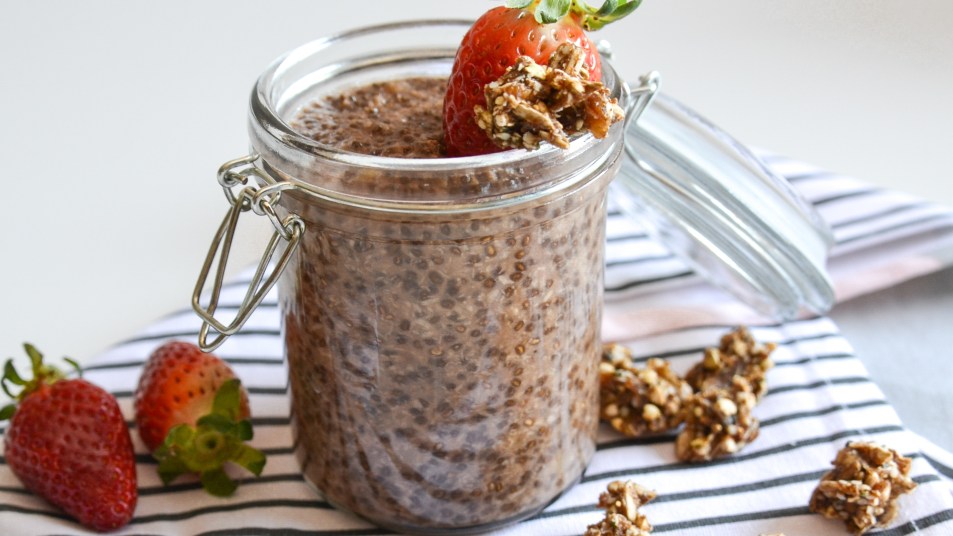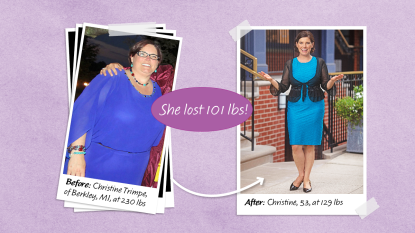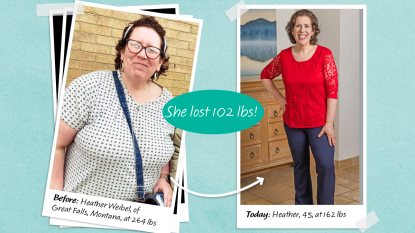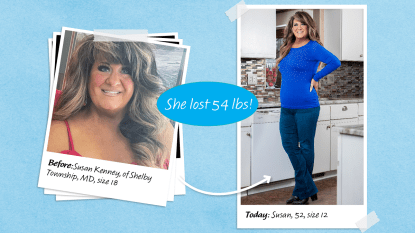The Keto Secret That’s Helping Women Lose 5 Times More Weight

The world has gone crazy for the keto diet — the low-carb, high-fat approach credited with helping women drop excess pounds while enjoying decadent foods like chocolate pudding and bacon. Can it get any better? Turns out, it can!
Naomi Whittel, Nutrition expert and author of Glow15 ($14.75, Amazon), has discovered the surprising secret to making the keto diet even more effective: “I had been following a keto diet for two years, and I cut out a lot of my favorite fiber-rich fruits and vegetables because many experts believe that fiber can disrupt fat burning. But I missed those foods, and I felt like it couldn’t be healthy to skimp on fiber for so long,” she shares. “So I added fiber back into my diet — just to see if I could without stalling my weight loss. I was surprised and thrilled when I felt great and finally lost the really stubborn pounds that I thought would never come off!”
The Keto Fiber Secret
“Fiber feeds the good bacteria in the gut, and those bacteria produce a short-chain fatty acid called butyrate. This compound has been shown to lower cholesterol, reduce inflammation and induce fat burn,” explains Raphael Kellman, M.D., author of The Microbiome Diet. “Butyrate activates the genes that boost metabolism.”
Indeed, according to Canadian scientists, adults who have more butyrate in their system produce five times more ketones than those who have lower levels of butyrate. Ketones, in turn, power up the body’s fat-burning engines and flip the genetic switch that instructs cells to burn stored fat. Another boon: Plant-based high-fiber foods are rich in alkalinizing minerals. And researchers at the University of Cambridge in the United Kingdom report that the body produces even more ketones in an alkaline state.
Fiber also makes sticking to a keto diet effortless. “A lot of women experience flu-like symptoms and constipation on a keto diet,” explains Whittel. “But by providing plenty of electrolyte minerals and keeping the bowels moving, fiber eliminates those symptoms even as it maximizes the power of the diet.” Hunger can also be a problem for keto dieters because high-fat foods contain a lot of calories in a small package —they simply don’t take up much room in the stomach. “But fiber comes in a bigger package. It fills the stomach to help control hunger,” says Dr. Kellman. “Your appetite will be stable, and your desire for unhealthy foods will rapidly diminish.” In fact, one study found that eating more fiber-rich foods decreased appetite by 20%. “I’ve been eating a high-fiber keto diet for 32 months, and I never feel hungry,” says Whittel. “I can’t believe how easy it is!”
Inspired by her own success, Whittel created a plan to share with others — and the results were astounding. Not only did the women in her highfiber keto clinical trial lose 117 percent more belly fat than those who didn’t follow a high-fiber keto plan, but they experienced incredible gains in their overall health. “They tell me, ‘This changed my life,’ and I get it because I feel the same way,” cheers Whittel, who has written up her plan and the amazing results in High Fiber Keto.
Women saw dramatic improvements in blood sugar, blood pressure, anxiety, and sleep. “We were shocked at the benefits they achieved in such a short time.” Indeed, women in the trial reported that the plan was better than they could have imagined. “I felt my energy go way up, and my mood improved too,” raves 46-year old Florida mom Leslie Carvell, who lost two jean sizes in just 22 days. “It’s actually more satisfying than my old way of eating.”
How It Works
Adding fiber to a keto diet nourishes beneficial bacteria in the GI tract, boosting their production of butyrate, a short-chain fatty acid that fires up fat burn. “This plan is designed to heal your metabolism so you can lose weight and keep it off,” promises Whittel. “You’ll transform your body without hunger, without flagging energy, and without the uncomfortable symptoms typically associated with the keto diet.”
Before you begin, Whittel recommends a five-day self-test. During this time, you don’t have to change your diet at all — simply track how much fiber (in grams) you’re eating each day (see the chart below or use a free meal-tracking app, like MyFitnessPal).
After five days, add up the grams of fiber you ate each day, then divide by five. If your result is 20 or higher, you can move to Phase Two. If your result is between 10 and 20, stay in Phase One for at least five days. If your result is lower than 10, follow Phase One for at least 12 days.
Phase One: Get your fiber fix.
“At first, fiber and keto seem like archenemies rather than a dynamic duo,” Whittel admits. “How can a low-carb plan include so much of a carb-centric nutrient like fiber?” The key, she discovered, is to focus on foods that provide fiber in a fairly low-carb package, like nonstarchy veggies, berries, and seeds.
Phase One is all about introducing more of these foods until you’re eating at least 20 grams per day. But don’t try to do it all at once:
“When you start eating more fiber suddenly, it can lead to gas, bloat, constipation, or even diarrhea,” says Whittel. That’s why you’ll slowly increase your daily fiber intake, adding an additional three grams of fiber to your diet every three days.
“If you feel any GI discomfort, slow down. It’s important to build up to eating at least 20 grams of fiber each day before starting Phase Two,” cautions Whittel. “Go at a pace that works for you!”
Phase Two: Power off the pounds.
During this phase, you’ll transition into a high-fiber keto diet for 22 days, cutting out most starchy carbs (like rice and bread) if you eat them, and adding plenty of fiber (like the foods listed in the chart at left) and dietary fat (like olive oil and cheese).
“You’ll enjoy the high-fat, low-carb foods allowed on typical keto diets,” says Whittel. “But you’ll also eat delicious high-fiber foods that keep your belly full while helping the body burn fat.” The best part: Unlike a traditional keto diet, which caps daily carb intake at 20 grams, you can eat as much as 50 grams of carbs each day on the high-fiber keto diet — as long you’re also eating at least 20 grams of fiber.
To get the benefits, start each morning with a fat- and fiber-filled breakfast, blending MCT oil and seeds into smoothies, digging into full-fat yogurt with berries and nuts, or whipping up two-egg omelets with spinach, bacon, and cheese.
At lunch and dinner, build meals around three ounces of protein, like salmon or grass-fed beef, and two cups of nonstarchy veggies, like cauliflower and squash. To boost fat burning, add healthy fats, like half an avocado or two ounces of full-fat coconut milk, as well as two tablespoons of fermented foods, like sauerkraut or yogurt.
Between meals and for dessert, enjoy fat-rich treats that contain fiber. These snacks can be simple (like celery spread with nut butter) or decadent (like keto-friendly fat bombs or chocolate chia pudding).
Keto-Fiber Diet Sample Day
Breakfast: Egg cups — Mix 1 egg, 1 Tbs. water, 2 Tbs. diced spinach and 1 Tbs. diced bacon into 4 greased ramekins. Bake at 400 degrees Fahrenheit for 15 min.
Lunch: Broccoli Cheddar soup — Simmer 2 cups chicken broth and 2 cups broccoli for 15 min. Stir in 1⁄2 cup heavy cream and 1 cup Cheddar.
Dinner: Bolognese — In a pan, warm 3 oz. browned ground beef, 2 oz. crushed tomato and 1 tsp. red wine vinegar. Serve over 1 cup zucchini noodles.
Lunch: Broccoli Cheddar Soup — Simmer 2 cups chicken broth and 2 cups broccoli for 15 min. Stir in 1⁄2 cup heavy cream and 1 cup Cheddar.
Dessert: Chia pudding — Combine 1⁄2 cup coconut milk, 1 Tbs. cocoa powder, 1 tsp. vanilla and 1⁄4 cup chia seeds. Chill for 30 min. Top with berries.
This article originally appeared in our print magazine.













